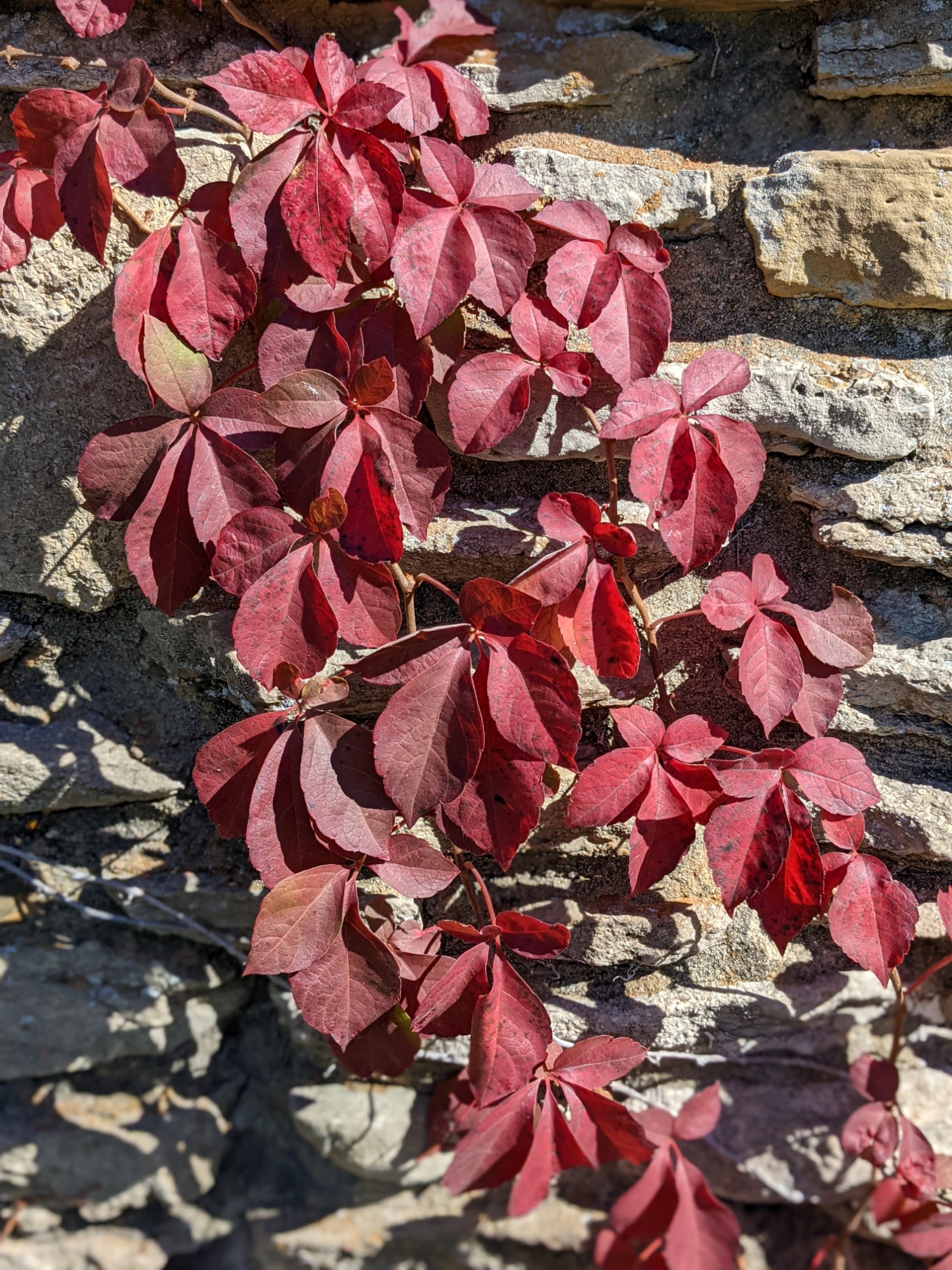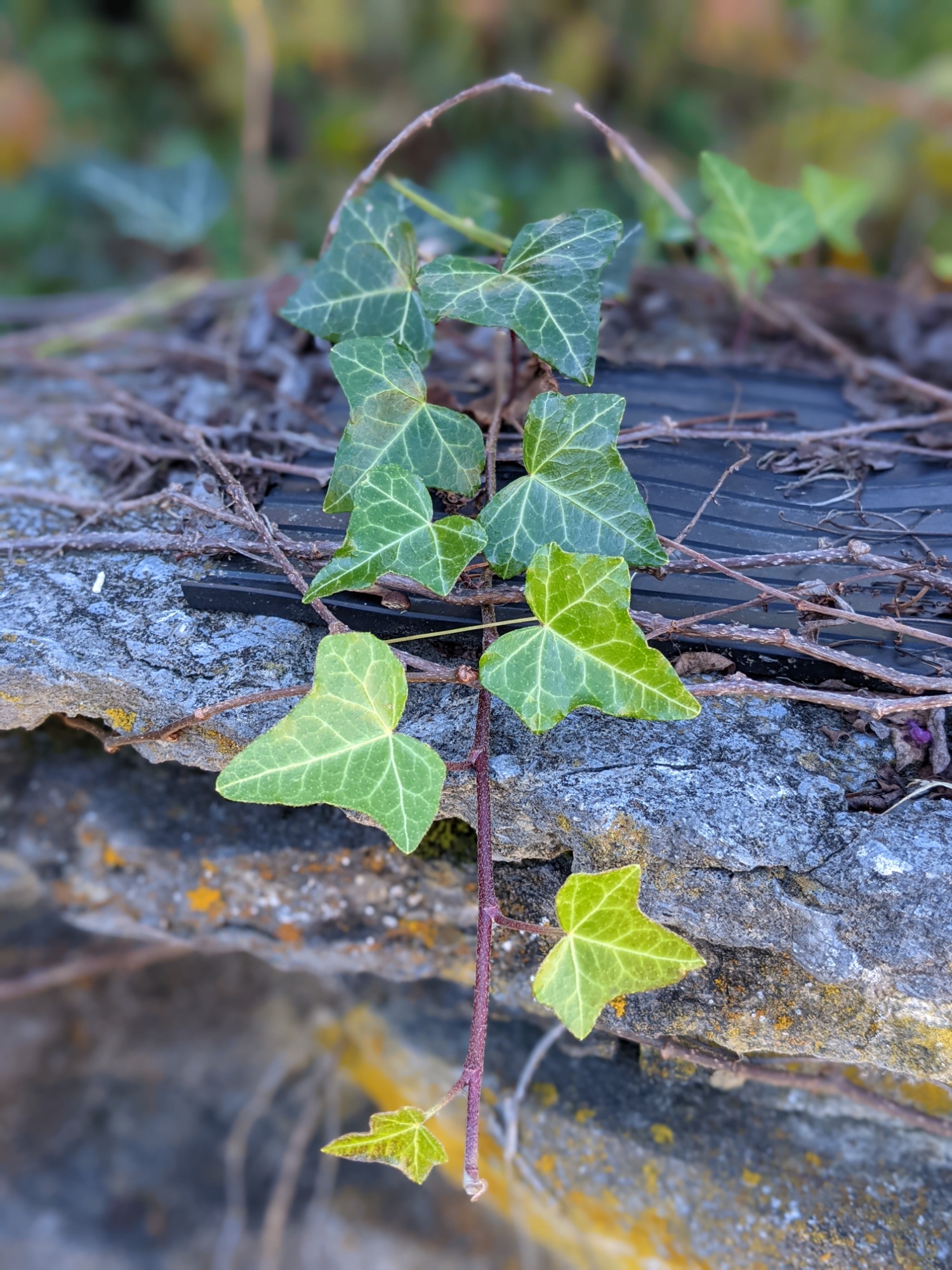
You may recognize the plant in the photo as poison ivy, bane of many a gardener and outdoors enthusiast. Touching it can cause allergic reactions like painful contact dermatitis. I know not to tangle with this formidable vine, so I look but don’t touch.
During much of the year, poison ivy simply looks like a dark green vining plant, but when Fall arrives, it sheds its plain attire and is revealed in its bold scarlet glory, almost daring a touch. I decline, choosing to appreciate it from a distance.
Virginia Creeper is another vining plant that grows in the same area as the poison ivy and, at first glance, looks similar. But it’s not, and it doesn’t cause contact dermatitis. This article from Mississippi State Extension describes how to tell the harmless Virginia Creeper vine from poison ivy; for example, if you look closely, Virginia Creeper has 5 leaves – poison ivy has 3.

So if poison ivy shouldn’t be touched and the urushiol can stick to clothing and other garments, how can it be managed without using chemicals? Goats may be the answer: they can eat poison ivy, poison oak, and poison sumac (also found here) without ill effects, and it doesn’t pass into their milk. It may be time to put some goats to work here on the farm!

Enjoy the sights of the season…carefully. 😉
